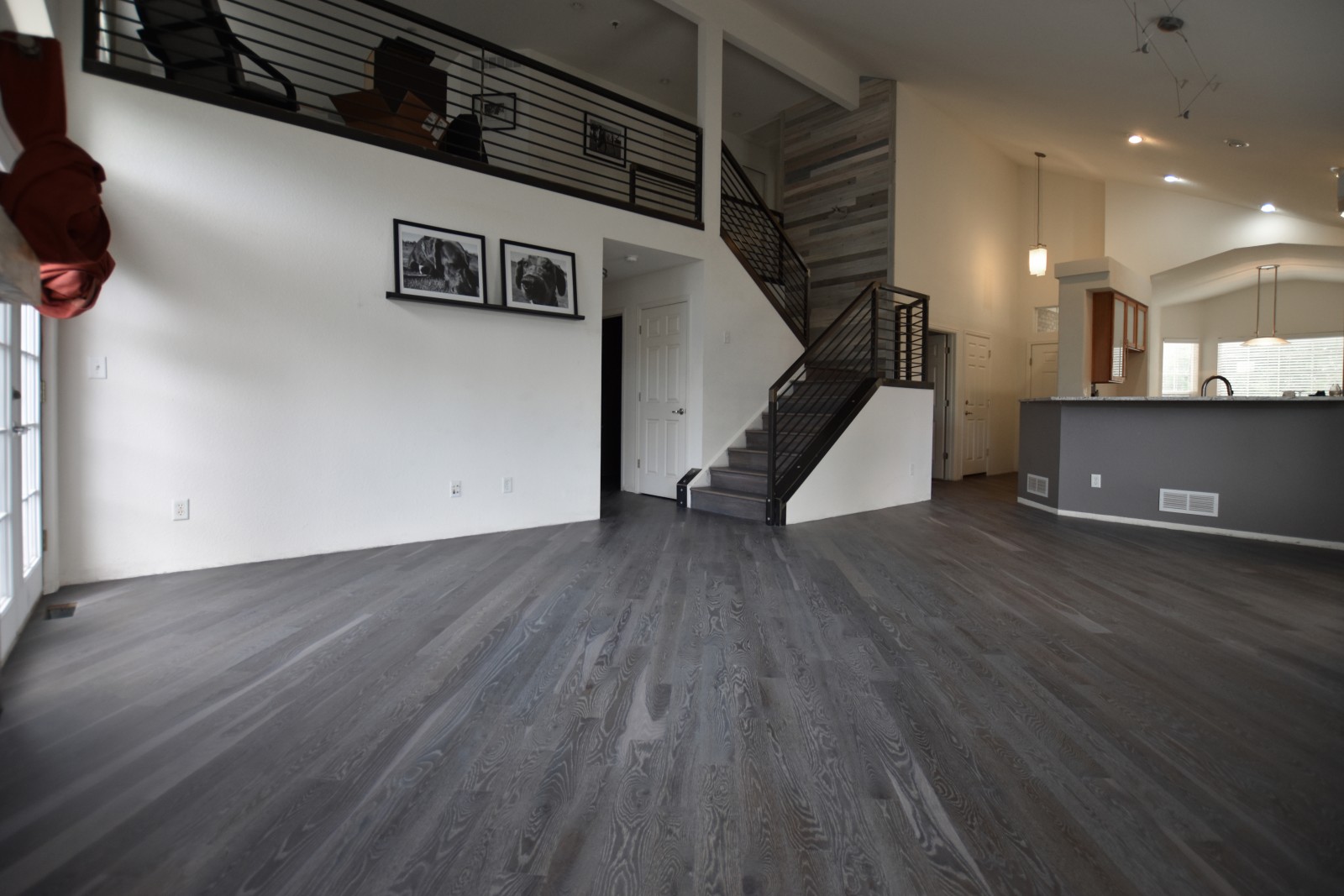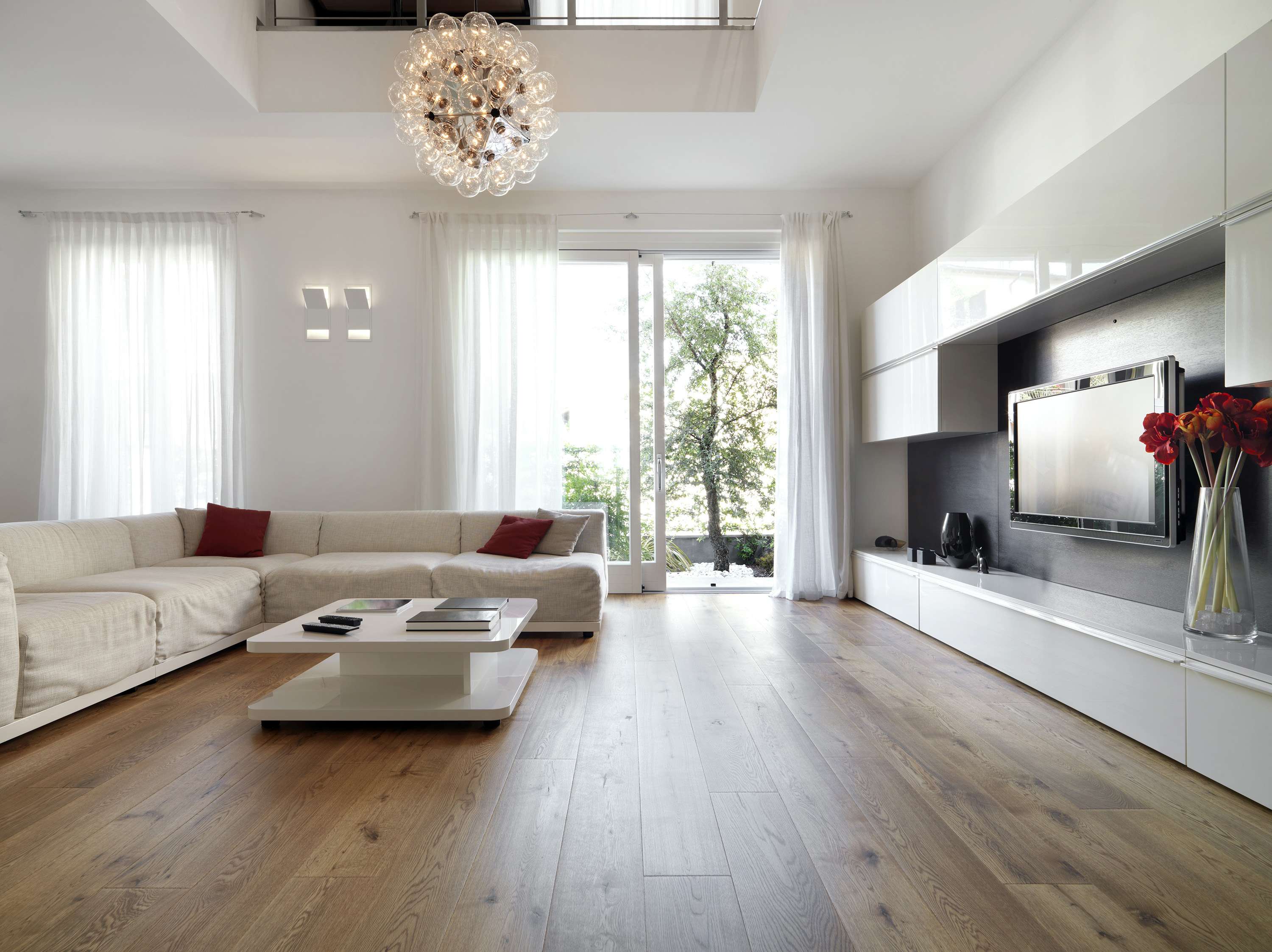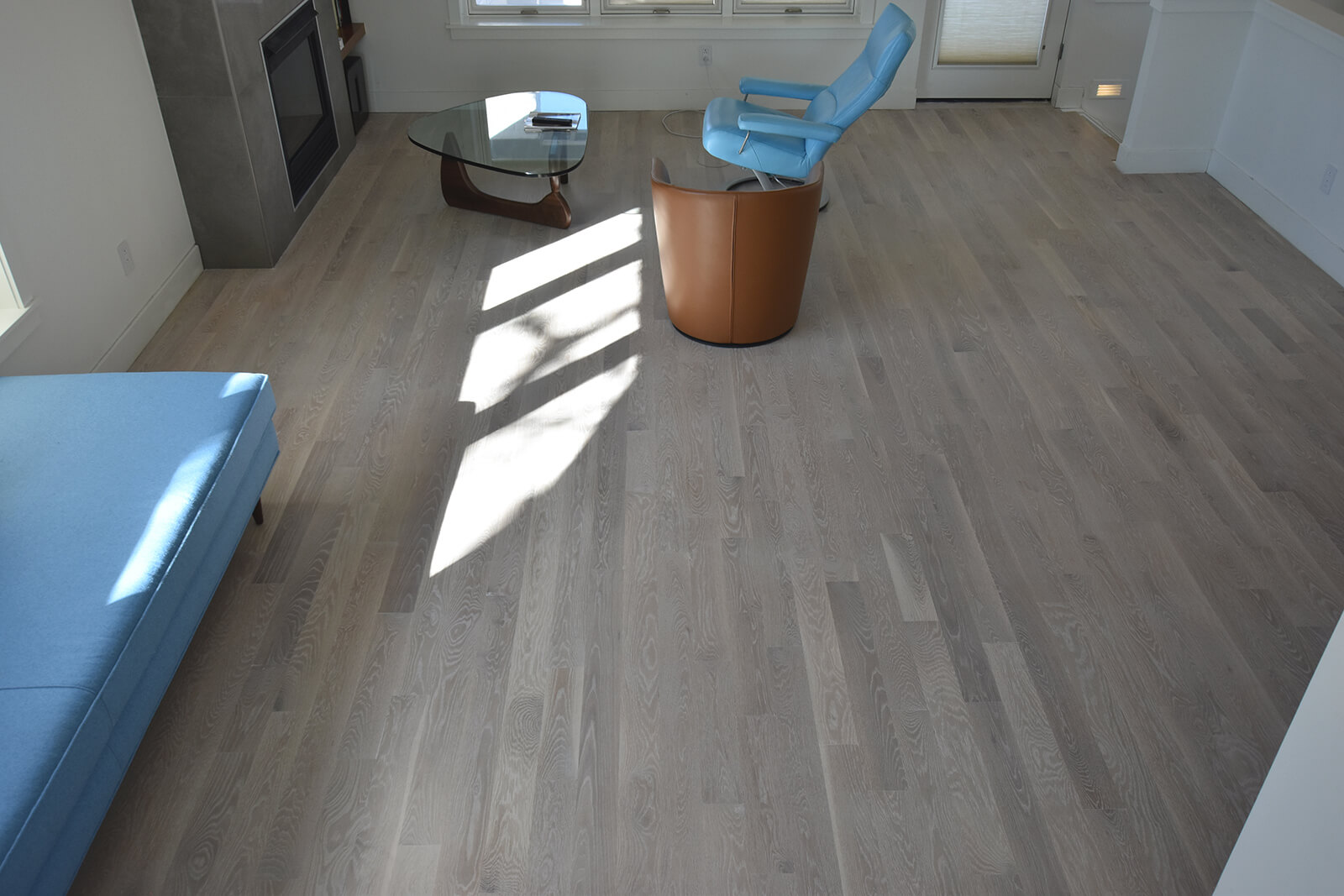Types of Wood Floors
While having a choice is good, a number of options availble in todays market can be overwhelming. We are here to make it simple.
Wood floors can differ by construction type and also in how it had been finished.
Pre-finished floors have been sanded, colored and coated with a protective finish in factory. For installation it only needs to be cut and nailed to the floor. Unfinished flooring is raw wood that must be sanded and finished after installation on site.
Solid wood floors are made of one piece of wood from top to bottom and can be used in any room that is on or above ground. Engineered wood floors are made from multiple layers of wood, with the top layer made of high-quality wood and inner core made from plywood or fiberboard.
Solid Unfinished
Pros
- Finished floor is seamless. No beveled edges that can trap dirt
- Performs well in dry climates
- Allows for flexibility in installation for a more finished look
- Wood species, board length width, mill cut can be customized
- Endless design and color choices
- Can be repaired and refinished many times
- Readily available
- 118% investment recovery on home sale per NARI
- Most environmently friendly option
Cons
- Longer installation times
- Not recommended for basements
- Doesn't perform as well humid climates

Solid Prefinished
Pros
- Quicker intallation times
- Doesn't require sanding during installation
- Affordable products available for lower budgets
- Performs well in dry climates
- Can be repaired and refinished many times
- Individual boards can be swapped out
Cons
- Less design options compared to unfinished wood
- Limited options with transitions and nosings. Color doesn't always match flooring.
- Beveled edges
- Wood milling imperfections do not get fixed with sanding
- Requires more materials for installation
- Limited options in stock locally
- Requires longer acclimation times
- More expensive to refinish in the future
- Not recommended for basements

Prefinished Engineered
Pros
- Quickest installation times
- Doesn't require sanding during installation
- Individual boards can be swapped out
- Superior dimensional stability
- Can be installed in basements
- Performs well in humid climates
Cons
- Doesn't perform well in dry climates. Humidifier is required.
- Quality engineered hardwood tends to be more expensive compared to solid flooring
- Market is flooded with low-quality products that don't last
- Standartized look
- Limited options in stock locally
- Nosings and transitions often don't match
- Can be repaired and refinished fewer times if at all
- Contains glues

Unfinished Engineered
Pros
- Can be finished to match existing solid wood
- Superior dimensional stability. Suitable for basements
- Performs well in humid climates
- Can be refinished and repaired at least once
- No beveled edges that can trap dirt
- Allows for flexibility in installation for a more finished look
- Design and color can be customized
Cons
- Doesn't perform well in dry climates. Humidifier is required.
- Usually needs to be shipped or made to order
- Tends to be more expensive
- Can be repaired and refinished fewer times compared to solid wood
- Contains glues
